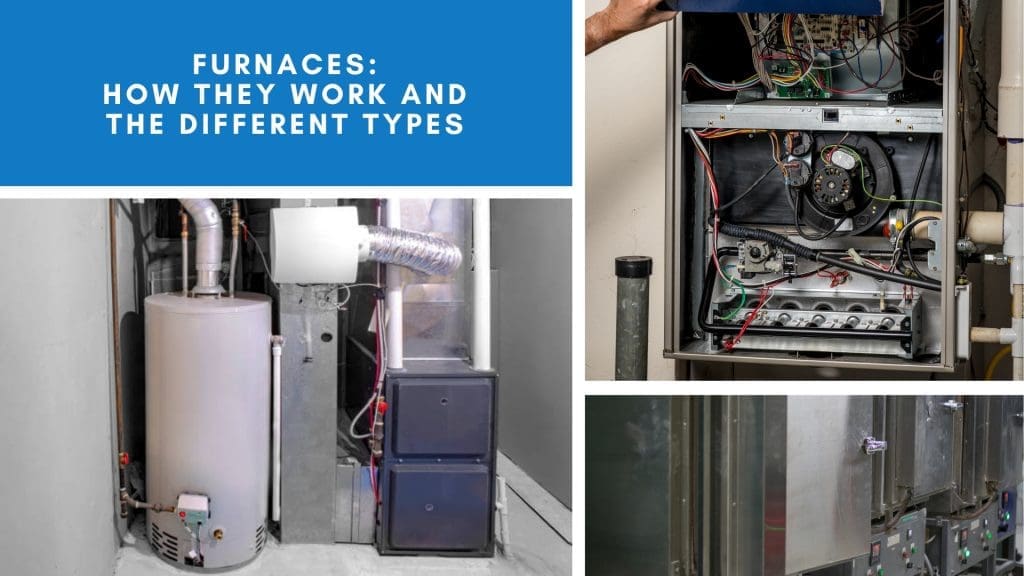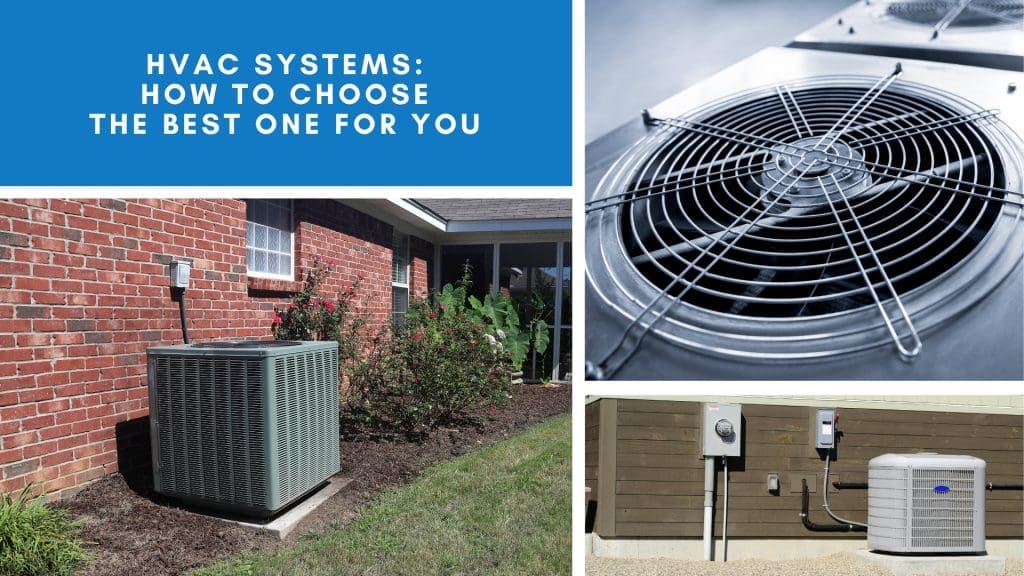When your air conditioner starts blowing hot air, it can be frustrating, especially during those sweltering Los Angeles summers. You might wonder, “Why is my AC unit blowing hot air?” or “How can I fix this quickly?” That’s where knowing how to fix AC blowing hot air becomes essential.
Don’t worry, you’re not alone. Many homeowners and small business owners face this issue. It’s a common problem with several potential causes.
In this guide, we’ll walk you through troubleshooting steps. We’ll help you understand why your AC blows warm air. And when it’s time to call in the professionals.
Let’s get your home cool and comfortable again.
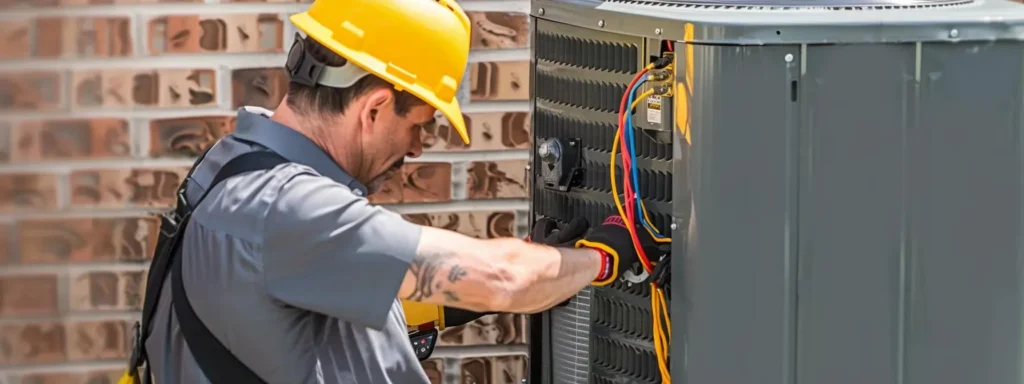
Why Is My Air Conditioner Blowing Hot Air?
If your air conditioning unit is blowing hot air, several culprits could be at play. It might be as simple as incorrect thermostat settings. However, more complex issues like mechanical failures could be involved too.
A faulty thermostat, clogged filters, or low refrigerant levels are common causes. Electrical issues may also affect your AC’s performance. Identifying the root cause is key to resolving the problem effectively.
Don’t overlook regular maintenance, which prevents many issues. Understanding potential causes aids in quick troubleshooting. It can also help you decide if professional help is necessary.
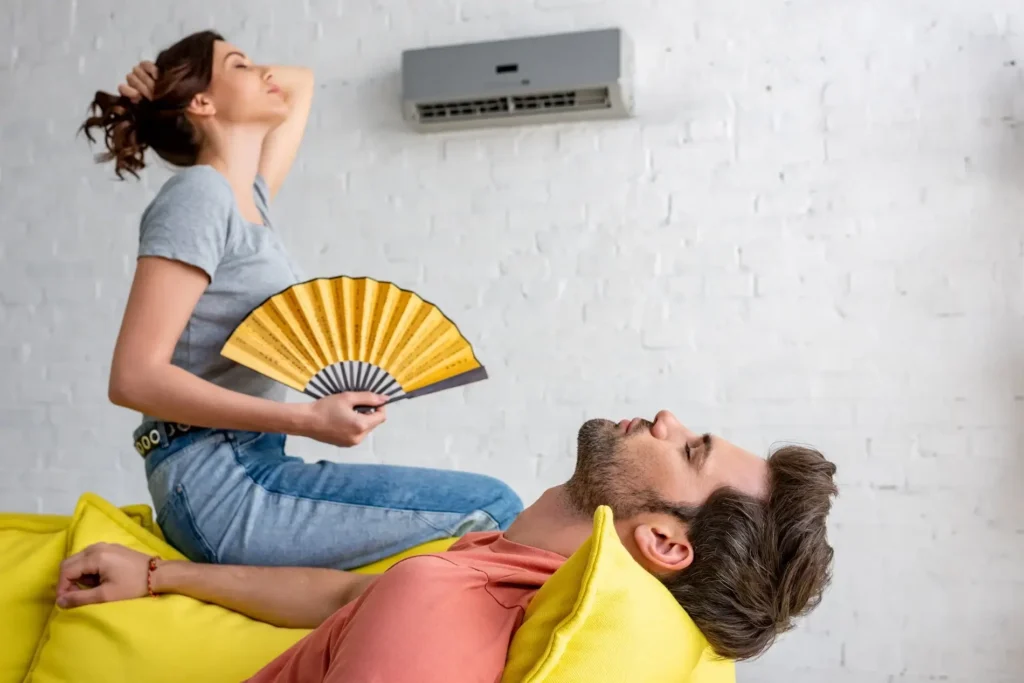
Quick Troubleshooting Checklist
When your AC blows warm air, start with a basic inspection. Addressing minor issues early can save you major headaches later.
Here’s a quick checklist to guide you:
- Confirm thermostat is set to “cool.”
- Ensure air filter is clean.
- Check outdoor unit for blockages.
- Verify circuit breaker isn’t tripped.
- Look for signs of refrigerant leaks.
Simple checks often reveal easy fixes. Don’t underestimate the power of a clean air filter. It’s critical for optimal airflow.
If you’re uncertain or uncomfortable, reaching out to a professional is always a safe option. They can help you address complex issues promptly.
Step 1: Check Your Thermostat Settings
The thermostat is your AC’s command center. First, verify it’s set to “cool” mode. It may sound simple, but mistakes happen, especially in busy homes.
Ensure the temperature setting is lower than the current room temperature. This prompts your AC to kick into cooling mode. Adjusting the temperature just slightly cooler can sometimes do the trick.
Inconsistent settings can lead to confusion, resulting in an AC blowing hot air. Here’s a quick checklist for thermostat settings:
- Set to “cool”
- Temperature lower than room’s
- Thermostat batteries fresh
If doubts persist after these checks, professional evaluation may be beneficial. Thermostat issues can often involve more intricate wiring concerns.
Step 2: Inspect and Replace the Air Filter
A clean air filter is vital for AC efficiency. Over time, filters can become clogged with dust and debris. This restricts airflow and forces your AC to work harder, sometimes causing it to blow warm air.
Check your air filter every month, especially during high-usage periods. A quick visual inspection can reveal a lot. If the filter appears dirty or clogged, replacing it can be a simple yet effective solution.
Consider these tips when inspecting your air filter:
- Check monthly during peak season
- Replace if clogged or visibly dirty
- Use quality filters for better performance
Regular filter changes not only improve air quality but can also extend your AC system’s lifespan, saving you time and stress in the long run.
Step 3: Examine the Outdoor Unit
Your outdoor unit plays a crucial role in cooling your home. If it’s obstructed, your AC might struggle to maintain the desired temperature, leading to warm air issues.
Start by visually inspecting the outside unit. Remove any leaves, dirt, or debris that could block airflow. A clear and clean space around the unit helps it function properly.
When examining the outdoor unit, consider these tips:
- Keep at least two feet of clearance around the unit
- Ensure the unit is level and stable
- Check for any visible damage or wear
Proper airflow around the outdoor unit is essential. A little regular attention goes a long way in keeping your AC system running smoothly, reducing the risk of interruptions during those hot Los Angeles days.
Step 4: Check the Circuit Breaker and Power Supply
Sometimes, the cause of an AC blowing hot air can be as simple as a tripped circuit breaker. This can cut power to your unit, causing it to malfunction.
To address this, check your home’s electrical panel. Reset any tripped breakers and ensure the AC unit is receiving power.
Here’s a quick guide:
- Locate the electrical panel
- Identify the AC breaker
- Reset if tripped, ensuring full contact
If you reset the breaker and it trips again, there might be a deeper electrical issue at play. In such cases, professional assistance is highly recommended to prevent further electrical problems or potential hazards.
Step 5: Look for Refrigerant Issues
Refrigerant plays a crucial role in cooling. When low, it can cause your AC to blow hot air. Detecting refrigerant issues isn’t straightforward. You might notice signs like weak cooling or ice on coils.
To investigate refrigerant concerns:
- Look for visible ice buildup
- Listen for unusual hissing sounds
- Monitor for decreased cooling effectiveness
If you suspect a refrigerant leak, it’s best to call a professional. Handling refrigerant requires special skills. Prompt action can prevent further damage and ensure your system runs efficiently. A licensed HVAC technician will safely and effectively manage refrigerant concerns.
Step 6: Inspect the Evaporator and Condenser Coils
Coils are vital in transferring heat. Dirty or frozen coils can lead to an AC blowing hot air. Regular inspection can save time and discomfort.
When checking your coils, consider the following:
- Ensure coils are clean and free of dirt
- Look for frost or ice accumulation
- Confirm coils are not damaged
If you find issues with your coils, clean them gently or call a professional for thorough servicing. Proper maintenance of coils helps maintain efficient cooling performance.
Step 7: Assess the Compressor and Fan
The compressor and fan work together to circulate refrigerant and air. Issues here can mean your AC blows warm air instead of cooling your space efficiently.
During your assessment, keep an eye out for:
- Unusual noises from the compressor or fan
- Fan not spinning when the unit is on
- Visible wear or damage
If these elements seem off, it’s best to reach out to a professional. They’ll ensure your system runs smoothly and keeps your home comfortable.
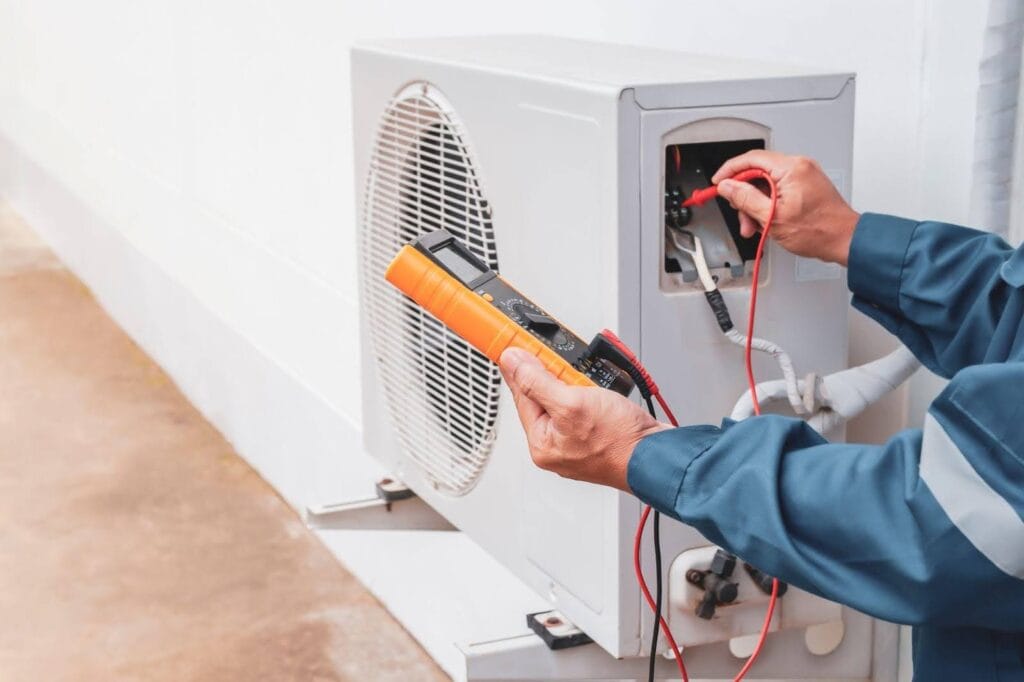
When to Call a Professional
Sometimes, the best fix is a call to a pro. It’s crucial to know when the issue goes beyond a DIY solution.
You should consider professional help if:
- You’re unsure about handling electrical components
- There’s a refrigerant leak suspicion
- The issue persists after troubleshooting
Relying on experienced HVAC professionals can prevent further damage and ensure safety. We’re just a phone call away to help you out!
Preventative Maintenance Tips
Regular maintenance can save you time and money. Keeping your AC in good shape is simpler than you might think.
Consider these maintenance tips:
- Change air filters monthly
- Schedule annual tune-ups
- Clear debris from the outdoor unit
- Check the thermostat batteries regularly
By staying proactive, you can ensure peak performance. Your comfort is worth the effort!
Why Choose LC Heating and Air Conditioning?
When it comes to reliable HVAC service, LC Heating and Air Conditioning has your back. Our team is dedicated to quality and your satisfaction.
Here’s what sets us apart:
- Exceptional customer service
- Experienced, friendly technicians
- Prompt response times
Your comfort and trust matter to us. Let us take the stress out of your AC troubles.
Final Thoughts: How to Fix AC Blowing Hot Air
Keeping cool shouldn’t be a struggle. With some basic checks and routine maintenance, your AC can provide comfort year-round. For complex issues, trust the experts.

